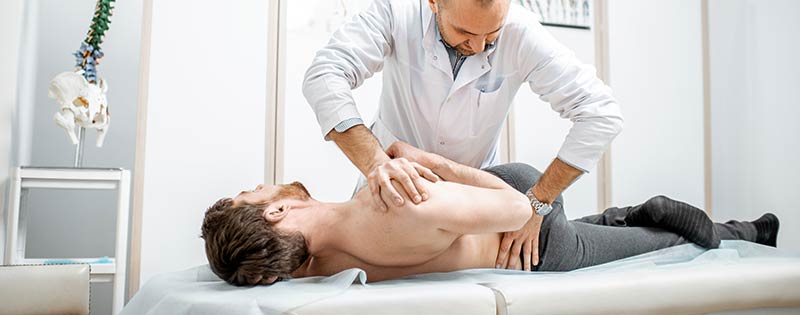by Mark Sanna, DC, ACRB Level II, FICC •
President & CEO Breakthrough Coaching •
Spinal decompression therapy provides chiropractors with one of the most effective methods available to treat the acute and chronic pain at the root of the opioid crisis. The typical spinal decompression patient shares a history of multiple failed medical interventions often culminating in a dependency on opioids. This patient population is at significant risk of death from overdose and suicide. This is due to the powerfully addictive effects of the opioids they have been prescribed, as well as the depression that they face due to the perceived hopelessness of their situation.
The Opioid Epidemic
It seems that not a day goes by without news of another high-profile individual, member of the local community and, even closer to home, family member succumbing to the effects of opioid addiction. More than 40% of all U.S. opioid overdose deaths involve a prescription opioid, with more than 46 people dying every day from overdoses involving prescription opioids. The human toll of prescription opioid use, abuse, dependence, overdose and poisoning have rightfully become a national public health concern. Spinal decompression therapy provides light and hope at the end of a seemingly endless path of disability and despair.
According to a recent Gallup-Palmer Report, approximately 14% of the United States population has been to a chiropractor in the last twelve months. However, more than 80% of the U.S. population will suffer significant low back pain at some point in their lives. It can be inferred that the primary choice for the treatment of acute and chronic low back pain is a medical doctor not a doctor of chiropractic. Unfortunately, the therapeutic tools used by most medical physicians to treat acute and chronic pain are limited to pharmaceutical intervention, corticosteroid injections and, after several failed attempts, ultimately surgery.
Chiropractic: The First Choice for Drug-free Pain Relief
The histories of patients who have been swallowed up, lost in, and spit out by the medical healthcare model are heart wrenching. Hours of each day are spent in medical waiting rooms and traveling across town from one physician to another hoping to find the help they so desperately desire. They often become addicted to prescription opioids and, when their prescriptions expire or they no longer have the financial ability to pay for expensive prescription medication, find themselves navigating the dangerous and often lethal world of illegal drugs.
Spinal decompression therapy provides drug-free alternative to pain management. This has become even more significant considering the recent directives issued by the American College of Primary Care Physicians, the Joint Commission, and the United States Surgeon General urging medical doctors and hospitals to recommend alternative, non-pharmacological interventions for pain relief including chiropractic care. A growing patient population in need, combined with a broken healthcare system seeking drug-free alternatives, provides the chiropractic profession with the most significant opportunity in its history to assume its role as the first-choice providers of natural, drug-free pain relief.
Emerging Technologies Buyer BewareWhen first introduced to the chiropractic profession, like many new technologies, spinal decompression equipment was extremely expensive and affordable to only a limited number of chiropractors. In the early 1990s, spinal decompression tables sold for over $100,000.00. Recent innovations in electronics and manufacturing processes have brought the price point of spinal decompression tables that produce similar, and at times superior, results into the reach of most chiropractors. Top-of-the-line spinal decompression tables now sell in the neighborhood of $10,000.00. Spinal decompression therapy has become a mainstream tool for chiropractors seeking to expand their therapeutic capabilities as well as the patient population they serve.
As with many emerging technologies, chiropractors seeking to add spinal decompression therapy to their practice should remember caveat emptor, buyer beware. Not all spinal decompression tables are the same. Chiropractors should keep in mind that the table that they choose will only be as effective as their ability to learn to distinguish which patients are candidates for spinal decompression therapy. Spinal decompression therapy is a doctor-dependent technique. It does not rely a upon a special algorithm or device, but upon the clinical skills and knowledge of the provider. Spinal decompression therapy is currently not included in the curriculum of most chiropractic colleges. For this reason, most chiropractors must seek education in spinal decompression therapy in a post-graduate setting. This education should be table agnostic, clinically-oriented, and applicable regardless of the table manufacturer.
Spinal Decompression Therapy: Safe, Effective and Affordable
Spinal decompression therapy is classified a non-covered service by most insurance companies. Even when a patient has insurance coverage, the policy typically has a deductible of $5000 or more, effectively requiring the patient to self-pay for the services. For these reasons, not only must spinal decompression therapy be effective, it must be affordable. Chiropractors must learn how to deliver cash-paid services, including spinal decompression therapy, in a way that patients will be able to fit the much-needed therapy into their family budgets. Once again, chiropractors must be aware that there are rules and regulations that govern the documentation, coding, fee-setting, and advertising of non-covered services. Be sure to seek advice from a knowledgeable consultant prior to implementing any cash-pay programs to be sure that they are compliant with all state and federal laws and regulations.
Spinal decompression therapy has provided countless patients relief when they thought there would be none. It has enabled them to break the cycle of opioid dependency. It has allowed them to regain a normal family and work life and to become productive members of society. This has helped them regain both their ability to function as well as their self-esteem. Chiropractic and spinal decompression therapy are perfectly positioned play a significant role in providing the safest, most effective and affordable solution to the opioid epidemic.
Dr. Mark Sanna is a member of the Chiropractic Summit and a board member of the Foundation for Chiropractic Progress. He is the president and CEO of Breakthrough Coaching (www.mybreakthrough.com 1-800-723-8423).










 ▶︎
▶︎  Why is the Discount Challenge prize amount $15,024? Because that is the average “per-occurrence” fine for Medicare inducements. That’s not $15,024 per patient, that’s not per provider, that’s PER VISIT. Stinks, doesn’t it? To us, the prize amount is worth the investment if we can help our profession better understand proper discounting.
Why is the Discount Challenge prize amount $15,024? Because that is the average “per-occurrence” fine for Medicare inducements. That’s not $15,024 per patient, that’s not per provider, that’s PER VISIT. Stinks, doesn’t it? To us, the prize amount is worth the investment if we can help our profession better understand proper discounting.